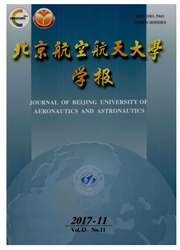

 中文摘要:
中文摘要:
全球导航卫星系统反射(GNSS-R)技术应用过程中接收机的测试验证需要反射信号产生源,以降低成本。信号的模型是GNSS-R信号产生源中的核心。针对缺乏相应模型的问题,提出了一种根据双基雷达原理建立GNSS海面反射信号模型的方法。首先,在分析GNSS海面反射信号特征的基础上,选取了恰当的海面反射点。然后,计算了雷达方程中的散射系数和散射面积,从而得到相应反射点的反射信号功率。最后,对所求得的反射信号参数进行仿真验证。验证的结果表明,反射信号的相关功率曲线与ZV模型理论曲线的相关系数优于0.98,能够有效地用于GNSS海面反射信号的生成。因此,该方法可为GNSS-R信号产生源的研制提供一定的理论支撑。
 英文摘要:
英文摘要:
In the application of global navigation satellite system-reflection( GNSS-R) technology,the reflection signal source is needed to test the receiver in order to reduce costs. The signal model is the core of GNSS-R signal source. In order to solve the problem of the lack of corresponding model,this paper presents a method of establishing GNSS sea surface reflection signal model based on the principle of bistatic radar. First,on the basis of analyzing the characteristics of GNSS sea surface reflection signal,sea surface reflection points were selected. Then,the scattering coefficient and the scattering area in the radar equation were calculated.Thus,the reflected signal power in corresponding reflection point was obtained. Finally,reflection signal parameters are simulated and verified. The simulation results indicate that the correlation coefficient of the signal correlation power curve and the theoretical curve of the ZV model is better than 0. 98,which can be used to generate the GNSS ocean reflection signal effectively. The approach is of important reference significance for the theory and the development of GNSS-R signal generator.
 同期刊论文项目
同期刊论文项目
 同项目期刊论文
同项目期刊论文
 A GPS Receiver Adaptive Digital Beamforming Interference Suppression Algorithm Based on Kalman Filte
A GPS Receiver Adaptive Digital Beamforming Interference Suppression Algorithm Based on Kalman Filte 期刊信息
期刊信息
